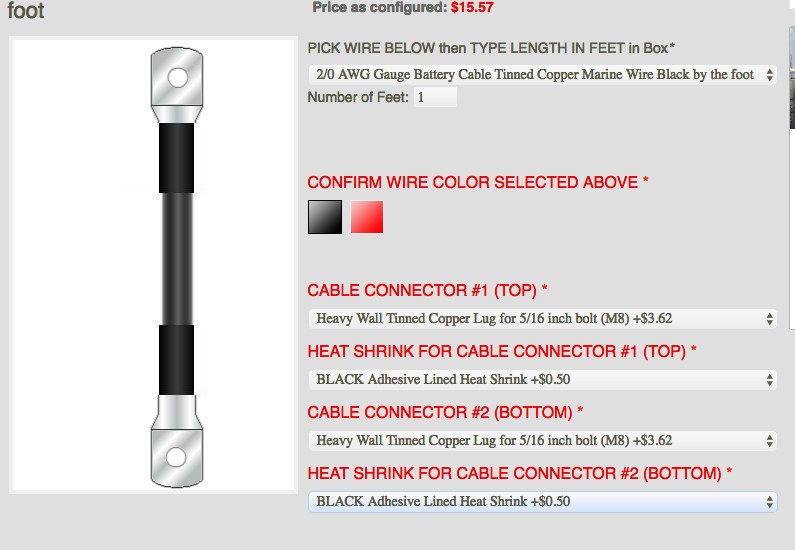Cory350
Active member
Time is ticking and I've got to get this done. My first question is about wire sizing for connecting my 2 12v batteries in parallel. genuinedealz.com was recommended in another thread but I'm not sure exactly what I need.
Here are my parts:
2 12v Batteries:
https://www.samsclub.com/sams/durac...rv-battery-group-size-31dtmagm/prod3590232.ip
Renogy 200w Solar Kit with PWM controller
Dometic CF-18 Fridge
MaxAir Fan
I was pricing out cables and I came up with about $60 just to wire them in parallel. That doesn't seem right.

I believe I have M8 lug connectors based off the specs from another website.
Here are my parts:
2 12v Batteries:
https://www.samsclub.com/sams/durac...rv-battery-group-size-31dtmagm/prod3590232.ip
Renogy 200w Solar Kit with PWM controller
Dometic CF-18 Fridge
MaxAir Fan
I was pricing out cables and I came up with about $60 just to wire them in parallel. That doesn't seem right.

I believe I have M8 lug connectors based off the specs from another website.






